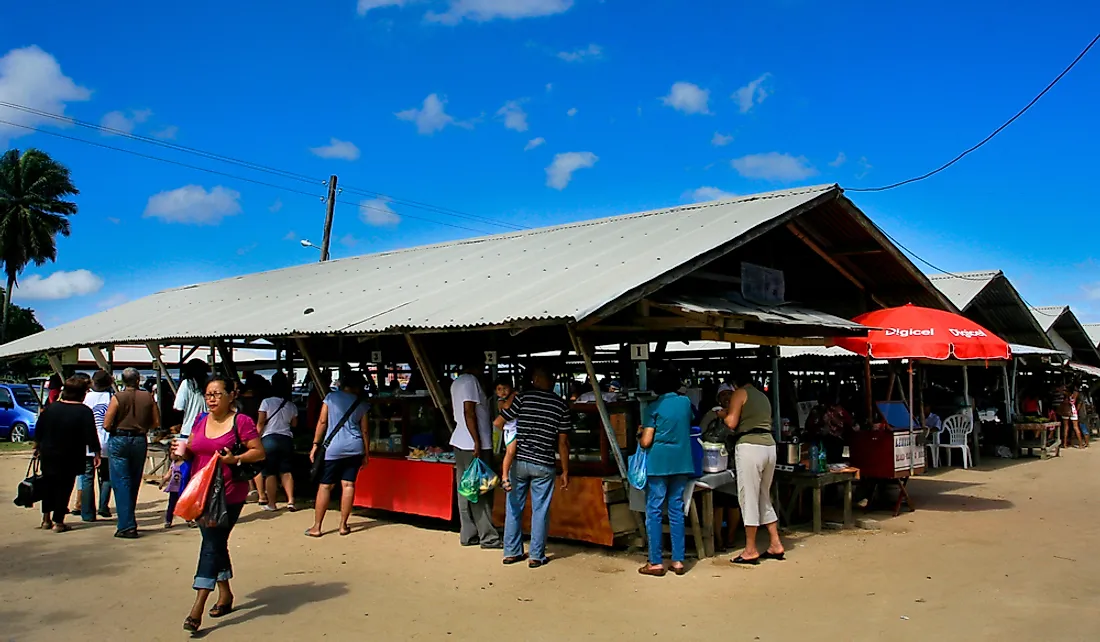Ethnic Composition Of The Population Of Suriname

Suriname is situated at the northern edge of South America bordering the Atlantic Ocean. The nation is bordered by French Guiana, Brazil, and Guyana to the east, the south, and the west respectively. The country has a small area of only 64,000 square miles, which makes it the smallest nation in South America in terms of area. The population of Suriname is a little over 550,000 people. The capital city, which is also the largest city, is Paramaribo. The official language is Dutch since it was colonized by the Dutch in the later stages of the 17th century during a time when slavery was rampant resulted in a multiethnic society. Independence for Suriname was not achieved until November 25, 1975.
Multiethnic Population of Suriname
According to estimates from July 2016, the small republic had a population of around 558,368 people, which was only a small increase from the 541,638 from the 2012 census. The population has high levels of diversity where there is no single group that can claim total and complete dominance. This diversity can be attributed to the period of Dutch rule when the colonialists used to take people of different ethnicities from all over the world. In addition, the country, just like in other countries, has experienced some migration in the past that has added to the ethnic diversity. Over the years, each ethnic group has been able to hold on to its beliefs and cultures while adopting new ones from all the intercultural mingling.
Largest Ethnic Groups in Suriname
Afro-Surinamese - 37%
The largest tribal group in Suriname is the Afro-Surinamese group, which forms about 37% of the nation’s population. This group is usually divided into two parts namely the Maroons and the Creoles. The Maroons makes up around 21.7% of the Surinamese population, traces its roots mostly to escaped slaves in the past. Further, the Maroons have five other smaller divisions namely Ndyuka, Saramaccans, Matawai, Paramaccans, and Kwinti. Maroons have seen their population drastically increase over the years from 9% of the population in 1964 to the present share. One of the reasons for this is that Creoles and Maroons are often confused, which is why an increase in one group means a decrease in the other. Mainly, this confusion and changes arise from the use of self-identification during censuses and other data collection activities. The Creoles, on the other hand, make up the remaining 15.7% share of the Afro-Surinamese group. The Creoles are mostly descended from a mixture of Dutch Europeans and slaves from Africa. The African ancestors of the Creoles were transported into the country back in the 17th and 18th centuries.
East Indians - 27%
Another significant group in the country is that of East Indians, which makes up around 27% of the national population. These people are sometimes known as Hindustanis. These are descended from Indian workers back from the 19th century. Most of the Indian ancestry came from Indian states like Eastern Uttar Pradesh, Bihar, and Jharkhand.
Indigenous Peoples - 3.7%
The Indigenous peoples of Suriname are composed of several groups including the Akurio, Arawak, Kalina (Caribs), Tiriyó and Wayana.
Ethnic Composition Of The Population Of Suriname
| Rank | Ethnic Group | Share of the Population |
|---|---|---|
| 1 | Afro-Surinamese | 37% |
| 2 | East Indian | 27% |
| 3 | Javanese | 14% |
| 4 | Mixed Heritage | 13% |
| 5 | Indigenous Peoples | 3.7% |
| 6 | Europeans | 1% |











